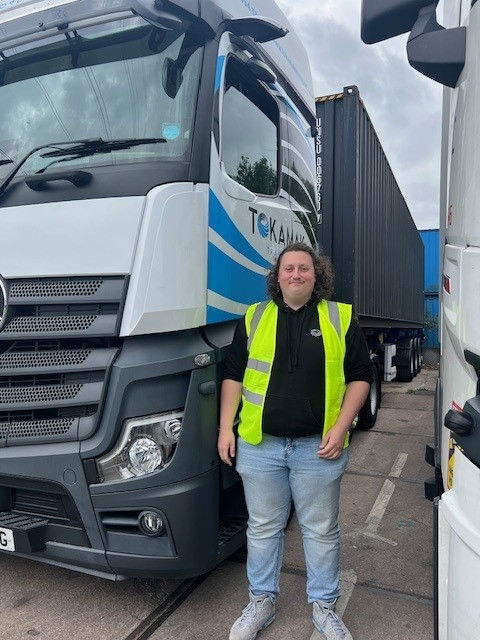Understanding Out of Gauge (OOG) Transport: Overcoming Sizeable Shipping Challenges
- joshuabaker61
- Oct 26, 2023
- 3 min read
In every sector that deals with oversized and overweight cargo, unique transport-related challenges arise. These obstacles are expertly managed by a specific category of freight shipping known as Out of Gauge (OOG) transport. This article explores OOG transport, its challenges, benefits, technological advancements, and its impact on sustainability, all with a specific focus on the UK market.
Understanding Out of Gauge (OOG) Transport
OOG transport is a specialised freight shipping method employed for cargo that exceeds the standard shipping container dimensions. This oversized cargo is generally too tall, too wide, or too heavy for conventional containerised shipping. The spectrum of goods falling under this category is wide and can include anything from large machinery, industrial components, construction vehicles, to wind turbine segments or aeroplane parts.
Challenges of OOG Transport in the UK
OOG transport presents unique challenges in the UK due to the country’s dense infrastructure and stringent transportation regulations.
Route Planning: OOG shipments often can’t travel along conventional routes due to their size or weight. This means arranging for road permits, police escorts, and possibly the removal of roadside infrastructure. In the UK, with its extensive network of older, narrower roads, this is a particular concern.
Carrier Availability: Not all carriers have the expertise or equipment to handle OOG shipments. Selecting a carrier with experience in managing the unique risks and responsibilities of OOG transport within the UK is critical.
Legal Limitations: The UK has specific regulations regarding oversized loads, which vary depending on the region. Understanding these legal restrictions is vital to ensure compliance during transport.
Safety: Ensuring the safe transit of OOG cargo is of utmost importance. Accidents can have substantial repercussions, making careful planning and execution imperative.
The Benefits of Specialised OOG Carriers in the UK
Given these challenges, many businesses in the UK depend on specialised OOG carriers to deliver their oversized goods. These carriers provide valuable services, including customised planning and coordination, specialist equipment, and extensive experience navigating local laws and regulations. They typically have established relationships with port authorities and other key players in the UK, making the shipping process smoother and more efficient.
Types of OOG Transport
In the UK, several types of OOG transport are commonly used, tailored to different kinds of oversized or overweight cargo:
Flat Rack Containers: Ideal for heavy loads or oversized cargo that can be loaded from the top or the sides, such as construction equipment or machinery.
Open Top Containers: Used when cargo needs to be loaded from the top, like large industrial components. They are covered with a tarpaulin rather than a solid roof, providing flexibility for tall cargo.
Platform Containers: When cargo exceeds both the length and width of standard containers, platform containers, which consist of a floor with no side or end walls, can be used.
The Role of Technology in UK’s OOG Transport
Technology has revolutionised the OOG transport industry, including in the UK. Here’s how:
GPS and IoT: Real-time GPS tracking and Internet of Things (IoT) devices are increasingly being utilised in the UK to monitor cargo conditions during transport.
Automated Route Planning: In the UK, automated software is often used to plan the most efficient and legally compliant routes for oversized loads.
Simulation Software: Some carriers use simulation software to anticipate and plan for potential difficulties when transporting an oversized load. This helps prevent problems before they occur.
Environmental Impact and Sustainability Efforts in UK’s OOG Transport
Like all forms of transportation, OOG transport contributes to the UK’s carbon emissions. However, the industry is making strides towards sustainability:
Eco-friendly Vehicles: Many UK-based carriers have started to utilise vehicles that run on alternative fuels, reducing their carbon footprint.
Optimised Routes: Efficient route planning does more than save time—it also helps in reducing fuel consumption and CO2 emissions.
Carbon Offsetting Programs: Numerous carriers in the UK have started participating in carbon offsetting programs, counterbalancing the environmental impact of their operations.
Conclusion: The Future of OOG Transport in the UK
OOG transport is a critical component of the UK logistics and freight industry. Despite the unique challenges it presents, this sector continues to innovate and adapt, providing vital services to industries dependent on the transportation of oversized and heavy items.
With advancements in technology and an increasing focus on sustainability, the future of OOG transport in the UK looks promising. As more industries depend on the transportation of oversized and overweight cargo, the demand for innovative and eco-friendly OOG transport solutions will continue to grow.
Whether it’s the blades of a wind turbine for a renewable energy project in Scotland or a construction crane destined for a London skyscraper, OOG transport ensures these crucial components reach their destinations safely and efficiently. The sector continues to drive progress across numerous industries, playing a pivotal role in the UK’s economy while taking significant strides towards reducing its environmental footprint.





